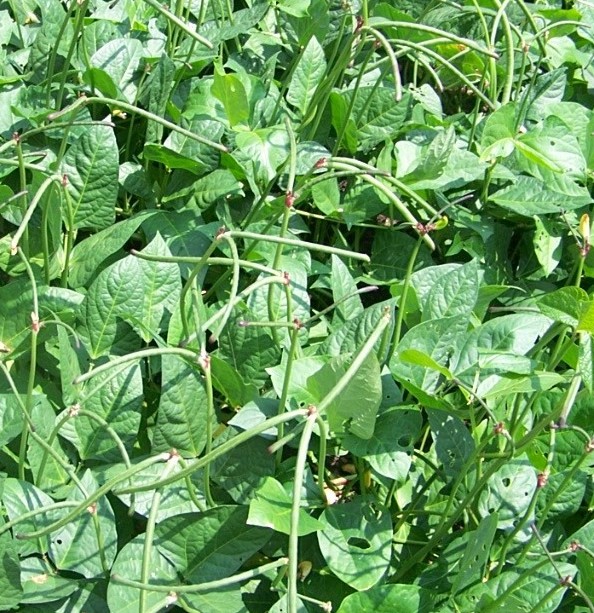|
Gardens Ablaze |
||
|
|
Beans |
|
|
Detailed Vegetable Profiles Site Map
Home |
There are basically two types of beans, edible podded, or snap beans, and shell beans with tough pods that have to be removed before eating. Allow shell types to mature fully on the vine before harvesting. Snap beans are harvested before they reach full maturity and eaten pods and all. Beans are warm weather plants that are intolerant of frost, so be sure that the danger of frost has passed and the ground is warm when planting. Make successive plantings of bush beans every two weeks for a continuous supply, but sow only once for the other bean varieties. Beans are plants that fix nitrogen in the soil, improving the conditions for whatever crop you plant after the beans are finished. Pole beans should be planted in hills 2-3 feet apart with 4-5 seeds per hill, and bush beans should be spaced 2-3 inches apart. Side-dress with fertilizer for the best results when the plants are 4-6 inches high. Do not allow beans to mature on the plant, or it will stop producing, and do not pick beans or cultivate when they are wet, or it will spread viral diseases. Medicinal Value: Fresh beans are a moderate source of beta carotene, protein, dietary fiber, vitamin C, and carbohydrates. Some studies suggest that half a cup of beans per day has a cholesterol-lowering effect in many people. Beans also appear to have a blood sugar normalizing effect, and may be of benefit to diabetics. Lastly, beans make you feel full, and consumption of them may be of benefit in an individual weight loss program. More information on beans is available in the Gardening QA Section. Click here to see what other gardeners are asking.
Custom Search
|
|
|
Gardens Ablaze |
||
 Beans
are second only to tomatoes for popularity in the home garden, and rank
second only to grains as a source of vegetable protein worldwide.
Bean varieties include both bush and pole types, and there are a wide variety
of colors, including purple, yellow, red, pink, and white. Popular bush
beans include Greensleeves and Tendercrop, and for bush lima beans, try
Fordhook #242 and Henderson. Good pole beans to try include Kentucky
Wonder and Romano, and for limas, try King of the Garden.
Beans
are second only to tomatoes for popularity in the home garden, and rank
second only to grains as a source of vegetable protein worldwide.
Bean varieties include both bush and pole types, and there are a wide variety
of colors, including purple, yellow, red, pink, and white. Popular bush
beans include Greensleeves and Tendercrop, and for bush lima beans, try
Fordhook #242 and Henderson. Good pole beans to try include Kentucky
Wonder and Romano, and for limas, try King of the Garden.